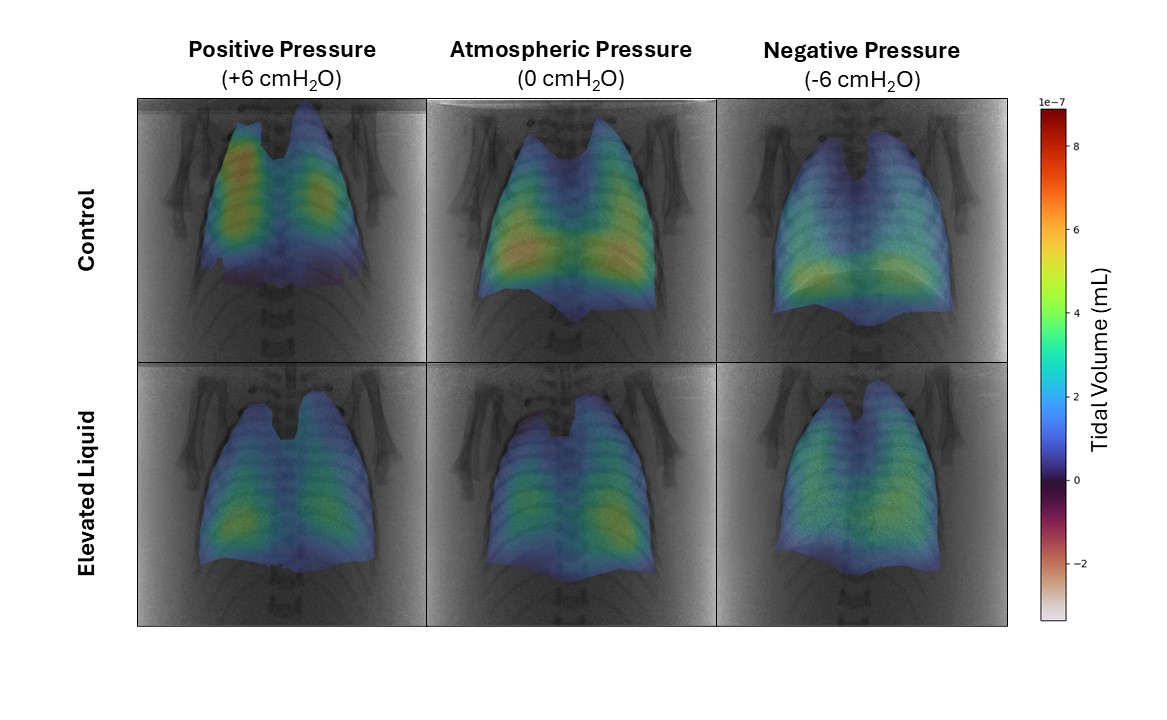Neonatal/Infant Resuscitation 1
Session: Neonatal/Infant Resuscitation 1
289 - External Negative Pressure Improves Lung Aeration in Near-Term Rabbit Kittens at Risk of Developing Respiratory Distress.
Friday, April 25, 2025
5:30pm - 7:45pm HST
Publication Number: 289.4804
Cailin Diedericks, Monash University, St Helena, Victoria, Australia; Kelly J. Crossley, The Ritchie Centre, Clayton, Victoria, Australia; Dominic Jurkschat, Monash University, Clayton, Victoria, Australia; Megan J. Wallace, Monash University, Clayton, Victoria, Australia; Indya M. Davies, Hudson Institute of Medical Research, Clayton, Victoria, Australia; Paige J. Riddington, Monash University, Clayton, Victoria, Australia; Arjan te Pas, Division of Neonatology, LUMC, Leiden, Zuid-Holland, Netherlands; Marcus Kitchen, Monash University, Melbourne, Victoria, Australia; Stuart B. Hooper, Monash University, Black Rock, Victoria, Australia

Cailin Diedericks, BSc (Hons) (she/her/hers)
PhD Candidate
Monash University
St Helena, Victoria, Australia
Presenting Author(s)
Background: Respiratory distress in term infants (TRD) is predominantly caused by elevated liquid in the airways at birth. During lung aeration, airway liquid is cleared into lung tissue, causing pulmonary oedema, with the degree of oedema depending on the volume of liquid in the airways. The consequences of increased pulmonary oedema include reduced gas exchange and increased thoracic expansion, which is needed to accommodate the oedematous lung tissue. We hypothesize that continuous external negative pressure will expand the chest and enhance lung aeration, whereas a positive pressure, which simulates swaddling, will reduce chest expansion and lung aeration.
Objective: Examine the effect of external positive and negative extra-thoracic pressures on lung aeration in near-term rabbit kittens at risk of developing respiratory distress.
Design/Methods: Rabbit kittens (30d gestation; term ~31d) were randomised into Control or Elevated Liquid (EL) groups. Lung liquid was drained in Control kittens to simulate expected volumes following vaginal delivery. EL kittens had lung liquid drained before 30 mL/kg was returned to simulate volumes after caesarean section. Kittens were delivered, placed in a water-filled (39℃) plethysmograph and the external pressure was adjusted to +6 (positive; Control n=8; EL n=8), 0 (atmospheric; Control n=7; EL n=7), or +6 (negative; Control n=7; EL n=7) cmH2O (sample size calculated on G*Power). Kittens were initially ventilated with a sustained inflation followed by ventilation with an 8 mL/kg tidal volume and PEEP of 0 cmH2O. Lung aeration (functional residual capacity; FRC and tidal ventilation) was measured by phase contrast X-ray imaging.
Data were analysed using a general linear model with Sidak-corrected multiple comparisons. Significance P≤0.05.
Results: External negative pressures directed tidal ventilation into the large, lower lung regions and increased FRC levels in both Control (26.7 ± 2.0 vs 12.6 ± 2.2 mL/kg; P< 0.001) and EL (19.6 ± 1.6 vs 10.0 ± 2.9 mL/kg; P< 0.01) kittens. External positive pressures directed tidal ventilation into the small, upper lung regions (Figure 1) and reduced FRC levels in Control (6.3 ± 0.8 vs 12.6 ± 2.2 mL/kg; P< 0.05) but not EL kittens (Figure 2).
Conclusion(s): External negative pressures improved lung aeration and the uniformity of tidal ventilation in near-term rabbit kittens after birth, whereas external positive pressures reduced lung aeration and redirected tidal ventilation into the smaller upper lung regions. These findings support the use of external negative pressure in infants with TRD.
Figure 1. Representative colour maps of the regional distribution of tidal ventilation in the lungs.
 Tidal ventilation is shown in Control or Elevated Liquid rabbit kittens exposed to external positive (+6 cmH2O), atmospheric (0 cmH2O), or negative (-6 cmH2O) pressures.
Tidal ventilation is shown in Control or Elevated Liquid rabbit kittens exposed to external positive (+6 cmH2O), atmospheric (0 cmH2O), or negative (-6 cmH2O) pressures. Figure 2. Functional residual capacity (FRC; mL/kg) after the sustained inflation (SI) in (A) Control and (B) Elevated Liquid (EL) kittens exposed to external positive (+6 cmH2O), atmospheric (0 cmH2O) and negative (-6 cmH2O) pressures.
 # indicates statistical significance between kittens in atmospheric and positive pressure (#P≤0.05), * indicates significant differences between kittens in atmospheric and negative pressure (**P <0.01, ***P <0.001), and ^ indicates significant differences between kittens in positive and negative pressures (^^^P <0.001). Mean±SEM.
# indicates statistical significance between kittens in atmospheric and positive pressure (#P≤0.05), * indicates significant differences between kittens in atmospheric and negative pressure (**P <0.01, ***P <0.001), and ^ indicates significant differences between kittens in positive and negative pressures (^^^P <0.001). Mean±SEM.
